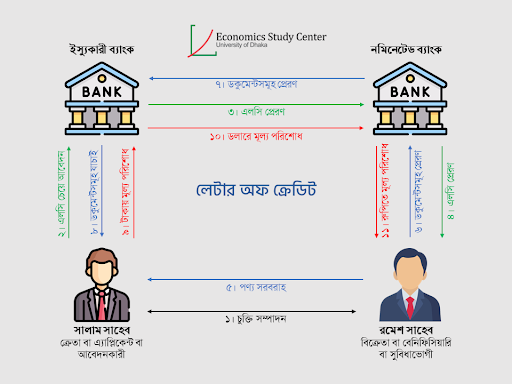|
Abrar Ahammed Bhuiyan It is no surprise that in an increasingly digital world, e-commerce has gained momentum in the pandemic. In fact, e-commerce revenue has been growing consistently since 2014. In Bangladesh, this burgeoning landscape began its trajectory from around 2013. According to the latest data from Statista, Bangladesh had an e-commerce market of 1648 million USD in 2019. It is estimated that in 2023 we will have a market size of nearly 3077 million USD. Due to the Covid-19 outbreak, the world has seen a rapid surge in digital transactions. But with the increased online transactions, another concern also emerges - fraudulence in the digital market arena. Perpetrators have always participated in wrongdoings in any market, and e-commerce is not an exception. More than 11.48% of customers were deceived in 2020 from various e-commerce and Facebook commerce (f-commerce) websites. The number was 7.44% in 2019. This data is revealed in “Cyber Crime Trend in Bangladesh 2020”, the annual research report of Cyber Crime Awareness Foundation (CCA Foundation). This article will try to present how enormous e-commerce fraud is, why it is happening, and what are the challenges for Bangladesh. We will further discuss some of the most prevalent ways fraudsters use, to give a more comprehensive picture of fraudulence. E-commerce spaces have numerous reasons for fraud to take place. With remote working scenarios becoming more and more popular in businesses, the chance of fraud in sales and distribution has increased. At times, dishonest retailers put counterfeit and damaged products in distribution to meet the increased demand. Sometimes, third-party vendors and online resales can become a reason for fraud. Since the beginning of this pandemic, an overwhelming number of businesses are transforming their operations from offline to online. Not having enough knowledge about the cyber world makes stakeholders related to these businesses vulnerable to cyber attacks and frauds. Moreover, in many small and medium businesses employees are hired without proper background checks. Hiring unethical employees costs both the company and its customers. Before we dive into more of this, let us learn about some common ways of fraud. Identity Theft : Fraudsters use email accounts, names, addresses, and even IP addresses to make them seem like genuine buyers. Then they make mischief often by making fraudulent purchases, creating fake user accounts, even by manipulating the traffic of the target business website. The latest research from atlas VPN shows that 67% of Americans worry about falling prey to identity theft, while only 20% are scared of being murdered. Friendly fraud: It is also known as refund fraud. This fraud event goes like this - though the customer has got the product that is being purchased, s/he will claim that the product has been damaged on delivery or never been delivered. Then the merchant has to redeliver the product, issue a refund, or face a chargeback. In 2016, chargebacks caused the e-commerce industry to suffer an estimated revenue loss of 6.7 billion USD, out of which 71%($4.8 billion) was due to friendly fraud. Triangulation Fraud: The name comes from the threefold process of (1) enticing buyers through fake look-alike websites (Phishing). (2) stealing their details like credit card credentials. (3) using those details as part of a broader scheme. This activity not only breaches the security of users but also damages the image of existing legitimate businesses. Affiliate Fraud: In this type of fraud, the number of usage of digital platforms increases, but that is fake. Companies that have affiliate marketing programs can fall victim to this fraud. Malicious actors can manipulate signups and the number of website visits or use strategies like refreshing the web pages and sending spam emails. Clean Fraud: Fraudsters impersonate any user by using their stolen credit card information. They can get hold of card information by convincing card or account holders to make purchases on a fake platform or intercepting any transaction process. Once they gain access to a user account, perpetrators can engage in fraudulent activities. After the account takeover, fraudsters can change the details of that account, make purchases, withdraw funds, and even gain access to other user accounts connected to the hacked account. Future trends of e-commerce fraud: As the E-commerce industry is continuously changing and heading toward massive expansions, so does e-commerce fraud. Due to a large number of high-profile data breaches in previous years, fraud activities like account takeovers might increase in years to come. Shortly, frauds like chargeback, friendly fraud, identity theft will persist with fraudsters being more focused and advanced with new technology. Already, bots are used to execute frauds on a larger scale. It is obvious that technologies like Machine learning and Artificial Intelligence will be integrated into these evil strategies. But it is not all bad news; e-commerce companies are now adopting fraud detection techniques. With the advancement of fraud detection technologies, companies will be better equipped to combat fraudsters. On the flip side, a new issue is coming up called False-Positives. Fraud detection often unintentionally rejects real customers who are trying to make a purchase. False positives overall pose a negative impact on the reputation and revenue bottom line of the companies. It is expected that, with the help of machine learning, companies will use predictive and behavioural models to detect fraudulent activity more efficiently. Frauds and guidelines in the context of Bangladesh: We have discussed fraud events where fraudsters can be from both the customer and the retailer side. However, in Bangladesh, the number of executing frauds is more pivoted on the retailer side. Trust between businesses and customers is vital for e-commerce activity. Yet this trust has been eroding as consistent irregularities are being unearthed. Despite a growing demand for Bangladesh e-commerce, and almost 45% of our demography has been identified as potential users according to IDLC in 2018, a significant part of the customer base is still hesitant to enter this market. User readiness is still a challenge for this industry. Among these challenges, continuous irregularities by many wrongdoers have become a hurdle regarding the goal of sustainability and expansion. The absence of the following policies, information, and actions in the industry and the governing system has made it imperative to outline a detailed guideline for e-commerce.
Recently, the Ministry of Commerce has launched Digital Commerce Operations Guidelines 2021. Though the guidelines have instructions about the processes of e-commerce, experts have pointed out that it should have more details on consumer rights. Recently, Bangladesh Bank has also mandated that e-commerce platforms not receive advance payment for their rendered products or services. Among these challenging circumstances, a holistic e-commerce framework and highest governance practices can rebuild trust in the industry and facilitate further growth in years to come. References linked below:
3 Comments
8/9/2023 06:28:49 pm
Thanks for your post.
Reply
10/8/2023 02:52:00 pm
I completely agree with the concerns raised in this article. The rapid growth of e-commerce in Bangladesh is indeed promising, but it also comes with the challenge of increasing fraud. It's crucial for businesses and consumers alike to be vigilant and adopt cybersecurity measures to protect against fraudsters. The points about counterfeit products, third-party vendors, and the lack of cyber knowledge are especially relevant. We must prioritize educating ourselves and strengthening online security to ensure a safe and trustworthy e-commerce environment in Bangladesh.
Reply
Leave a Reply. |
Send your articles to: |




